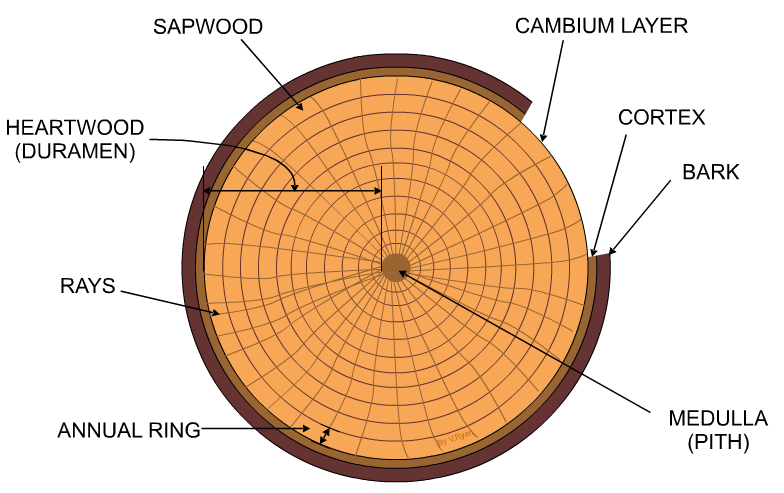| CLICK HERE FOR INDEX PAGE |
| COMPOSITE MATERIALS - NATURAL WOODS |
| V. Ryan © 2010 |
| PDF FILE - CLICK HERE FOR PRINTABLE WORKSHEET |
|
DEFINITION: Composite materials, sometimes referred to as composites, are materials composed of two or more component parts. These component parts may have different physical or chemical properties and when carefully inspected, they appear as separate parts, bonded together, forming a composite material. |
| Composite materials are often regarded as being modern materials, this is not the case. Perhaps the best example of a composite material is natural wood. Natural woods are composed of varying shapes of cellulose fibres. A simplified cross-section of a tree trunk is drawn below and shows the different parts. The structure of natural woods makes them extremely versatile and they have a vast range of uses / practical applications. |
 |
| PITH -
Represents the early growth of the tree, composed of dead tissue ANNUAL RINGS - Shows the growth of the tree during one season. HEART WOOD - Composed of hardened cells, giving the tree most of its strength and provides most of the usable timber. SAPWOOD - Newly formed wood, often not used during the manufacture of wood products, as it is too soft. CAMBIUM LAYER - Surrounds the sapwood and is the part of the tree where new timber growth takes place. Wood cells grow on the inside of the cambium layer. CORTEX and BARK - Composed of wood cells and air. RAYS - Thin lines of tissue. The rays distribute the waste to mature cells, where it is stored. |
| According to the definition of Composite Materials, natural woods are composed of two or more component materials, each having different physical and chemical properties. |
| CLICK HERE FOR RESISTANT MATERIALS INDEX PAGE |